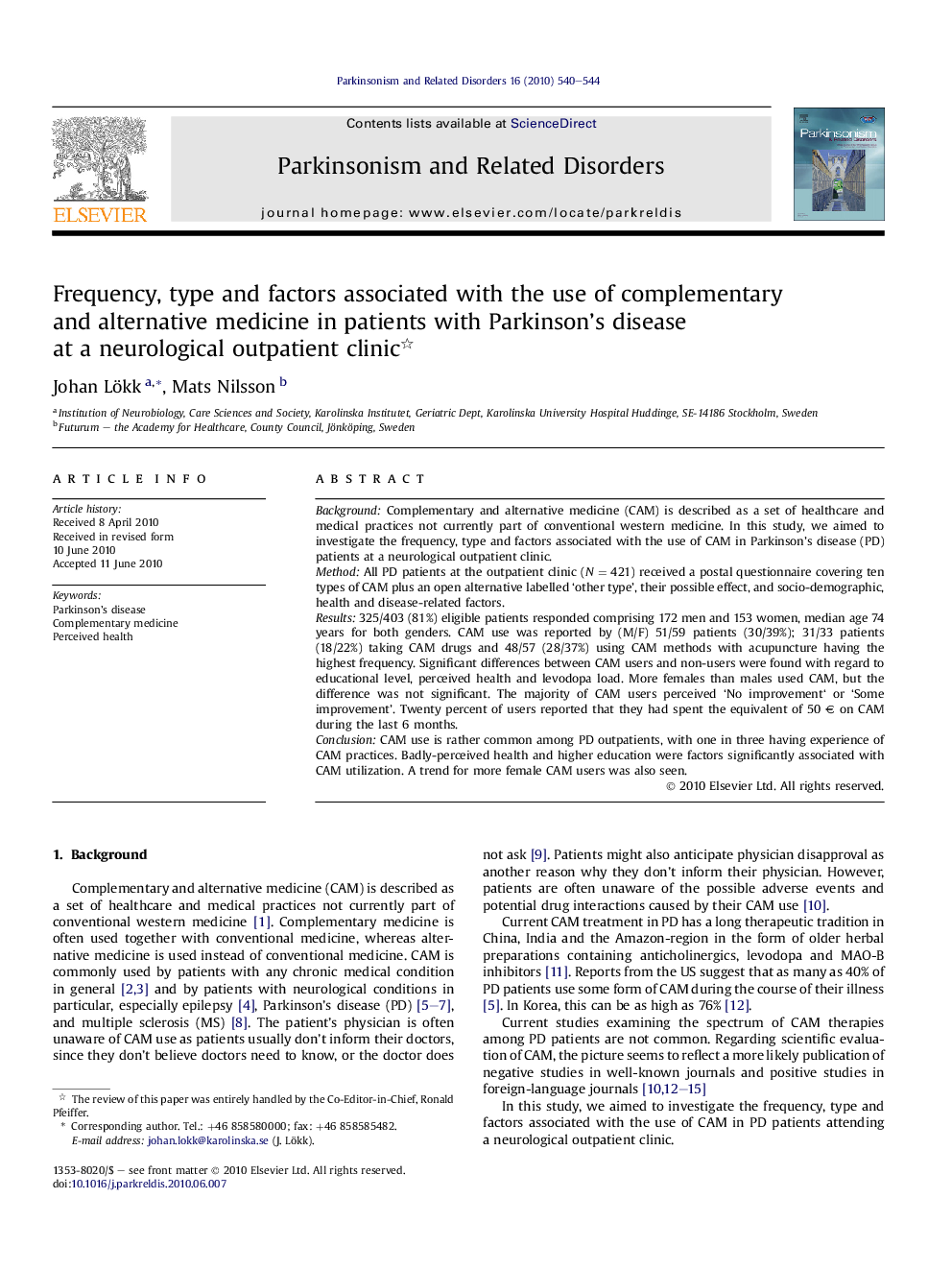| Article ID | Journal | Published Year | Pages | File Type |
|---|---|---|---|---|
| 1921340 | Parkinsonism & Related Disorders | 2010 | 5 Pages |
BackgroundComplementary and alternative medicine (CAM) is described as a set of healthcare and medical practices not currently part of conventional western medicine. In this study, we aimed to investigate the frequency, type and factors associated with the use of CAM in Parkinson’s disease (PD) patients at a neurological outpatient clinic.MethodAll PD patients at the outpatient clinic (N = 421) received a postal questionnaire covering ten types of CAM plus an open alternative labelled ‘other type’, their possible effect, and socio-demographic, health and disease-related factors.Results325/403 (81%) eligible patients responded comprising 172 men and 153 women, median age 74 years for both genders. CAM use was reported by (M/F) 51/59 patients (30/39%); 31/33 patients (18/22%) taking CAM drugs and 48/57 (28/37%) using CAM methods with acupuncture having the highest frequency. Significant differences between CAM users and non-users were found with regard to educational level, perceived health and levodopa load. More females than males used CAM, but the difference was not significant. The majority of CAM users perceived ‘No improvement‘ or ‘Some improvement’. Twenty percent of users reported that they had spent the equivalent of 50 € on CAM during the last 6 months.ConclusionCAM use is rather common among PD outpatients, with one in three having experience of CAM practices. Badly-perceived health and higher education were factors significantly associated with CAM utilization. A trend for more female CAM users was also seen.
